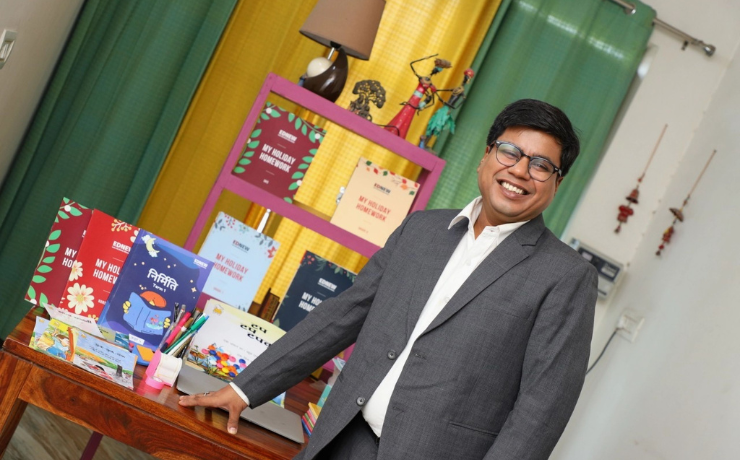The 60s movie, ‘The Dirty Dozen’ evokes memories of Hollywood biggies like Lee Marvin, Donald Sutherland, Charles Bronson, Ernest Borgnine and others sent on a suicidal mission to eliminate top-ranking German officials.
India’s very own dirty dozen are on a mission to make India’s vibrant, rural landscapes more sustainable and empower the inhabitants to the hilt. Canta Dadlaney gets you the story of a unique group of people.
Kedarnath tragedy and a change of heart:
Roopesh Rai left a career in hospitality to revive the glory of the rural hinterlands of India. The 2013 tragedy of the cloudburst in Kedarnath impacted Roopesh enough to take the path few would dare to; that of saving the environment, nature and empowering the less privileged.

India is home to 6,50,000 villages, each with its own mystique. The hills of Uttarakhand beckoned Roopesh who, with his vast and rich experience in hospitality, quickly sensed the need of the hour of this surreal region, the first of which was Nag Tibba, the Tehri district of Uttarakhand. Roopesh was soon joined by Mani Mahesh Aurora, who lives by the mantra of, ‘everything is possible’. Mani is the first Co-Founder of the parent IPRs holding company, Nat-Rural Agro Tourism Pvt. Ltd., aimed at solutions for reverse migration of marginalized farmers.
Pradeep Pawar, a native and an ex-mountaineering coach in the Nehru Institute of Mountaineering, joined Roopesh as a construction coordinator and is now one of the Directors as also a stakeholder in the parent company. Currently, Roopesh has the support of 45 members some of who are investors and some with the right skill sets for his initiatives.
What they do: From reviving the economy of abandoned villages to empowering the rural folks and promoting tourism, The Dirty Dozen do all they can to safeguard India’s indigenous heritage.
Green People:
Roopesh’s first initiative, ‘Green People’, aimed at the development and sustenance of the rural Indian landscapes. “Our mission was to revive the rich old culture and traditions of rural India, which had lost their glint, simply because people were lured by the blind city lights. We wanted to preserve the environment and develop the living standards of the rural folk, by instilling in them the faith that their rural occupations had a lot to offer, something we saw, fast-fading from these locales,” Roopesh shared.

The Dirty Dozen function through two channels, namely, Theme Villages by Hideouts and Bakri Chaap. Theme Villages by Hideouts is totally focused on the revival of the abandoned villages in this region. It involves farm retreats and home stays that help leverage the tourism potential of this region.
Bakri Chaap entails the indigenous farm produce of the communities they work with. They establish a direct commercial link for the sale of their products in urban and distinct outlets. The team has worked with more than 700 farmers indirectly. They were taken aback by the superior quality of indigenous millets and pulses which help alleviate lifestyle illnesses. They connected with the local farmers, discussed the marketing of their products and set the wheels of the ‘Bakri Chhap’ brand rolling. It also boosts the tourism of these intriguing hilly regions!

The Bakri Chaap products include Himalayan pulses, millets and honey. Much to their dismay, they discovered that though people were buying them at five-star hotels, our own farm retreats and even Amazon, the repeat orders were few. The production process was elaborate and buyers were not familiar with the ingredients listed on the products, which had a limited shelf life. But things have changed for the better now. The local millet cultivation has proved to be more nutritious and healthier and has served as the best alternative to the Indian wheat flour (aata).

For the curious, the Bhakri Chapp products are available on Amazon – a must-buy and must-relish!
Picture Link – www.Grrpl.inani
Even as Green People took off with much aplomb, Roopesh ventured into establishing another brand, ‘The Goat Village’. Roopesh was amazed to discover the large populace of goats at the dizzying heights of Nag Tibba.

“The first thing that came to mind was goat cheese! My experience at the Taj brought home the fact that goat cheese would be a great investment. Unfortunately, we realized that the goats in Nag Tibba were not lactating because of in-breeding,” shares Roopesh.
‘Bakri Swayamvar’ – Goat Marriages – served to be the ultimate solution to resolve this issue. “Not only was the concept accepted but it changed the fortunes of the locals as well. They realized we had noble intentions of wanting to see them prosper and their lands flourish. We helped revive goat farming, the mainstay of such villages and today, it is well-complemented with other agricultural activities which have helped upscale the living standards of the local people,” Roopesh claims.

The genuine endeavours of the dirty dozen earned them ample goodwill and before they knew it, they were a household name. They were inundated with requests – government organizations, self-help groups and other rural entities offering to work in this region but declined all for sheer lack of financial and human resources.
The Goat Villages initiative has brought home many awards, the most notable one being the World Responsible Tourism award 2020 from London (World Tourism Mart London).

Picture Link: https://youtu.be/vXfXGCkYpoE
Pay what you like retreats:
The Nag Tibba trek is the highest altitude pointing to a lower Himalaya. Most trekkers take the convenient path which starts from Mussoorie. Roopesh and his friend discovered the tougher path of the trek, which would add another 2-3 hours to the entire trip. “The roads were anything but roads in the real sense but we encountered eager tourists who were very comfortable with the idea of sleeping in huts. We gave them the liberty of paying what they desired, not realising what this gesture of ours was going to bring us,” he hints.

Covered by a leading English newspaper, ‘Pay what you like’ concept was a thunderous success. “Our phones didn’t stop ringing!” exults Roopesh. People from different walks of life landed up for the treks and the ‘hut experience’ including students, solo adventurers and even chefs. The highlight of the tour for every visitor was the natural richness of food, and the proximity to nature. These treks started off with 1,200 individuals a year, and in four years, it has increased close to 88,800.

Today, the regions have more than 100 community-run home stays. The earnings of the trek-guides and mule owners have increased and many have managed to pay off their loans and avail of free insurance. Life has become more comfortable now for the locals and their goats.
Amidst all this, Roopesh also got involved in the revival process of a dying form of architecture, Koti Banal. This is a 1000-year technique followed in distinct parts of Uttarakhand and Himachal and helps tide over natural catastrophes like earthquakes.
Hideout Retreats –at Kanatal, Anjooth, Kumali and Urgam Valley.
The immediate question that pops up is: Why ‘Hideout’?

“Because we had nothing to hide” says Roopesh in a funny vein. These are nested in the midst of the most serene settings of the region. Twelve rustic cottages in each region, form the ultimate getaway from the mad, mad world. The ‘Hideouts’ encompassed three categories of lodging; A, B and C. The first category would cater to an upmarket audience, the 2nd at Rs 999/ and the third would be the ‘pay what you like’. Every hideout also serves as a mini farm produce collection centre for the region in tandem with Bakri Chhap.
Picture Link – http://www.thegoatvillage.com/
‘Madhouse to Mudhouse’ is the concept of stone and wood accommodations that form an urban community with a rural mindset. From interiors to the immediate surroundings, every feature of these dwellings is commonplace yet comfortable. Madhouse to Mudhouse is the first ever, zero-employee private limited venture that plans to go public. The experience makes you feel the pulse of the lives of the people, their cultures, and their indomitable survival skills. “Though the concept was founded for Uttarakhand, we plan to expand it across the country through meaningful collaborations,” shares Roopesh.
The road ahead:
Currently, Roopesh operates with very limited resources and manages the routine administrative expenses which are taken care of by the very nominal membership fee. Every other operation is managed virtually! All three ventures, viz; Hideout, Bakri Chaap and Madhouse to Madhouse – are for-profit organizations. Their non-profit activities in the space of Medicare and Edu-care, will be executed under the mantle of Madhouse to Mudhouse.
They provided free computer education to village children in the Jaunpur region of District Tehri, Garhwal.
“We have physical assets only in Uttarakhand. In other regions, like Himachal, Punjab, Bihar and MP, we have management and franchise collaborations. Our expansion into other states involves collaborating with individuals and organisations having a strong territorial/regional social equity but no exposure to tourism and sustainable rural business models. We are definitely expanding in a big way,” explains Roopesh.
For inquiries on treks and retreats, connect with:
Abhinav on +91 7042722202 and Ishaan on – +91 98187 35994
Email: mad2mudhouse@gmail.com
The Goat Village is a unique concept of farm retreats and home-stays managed by The Green People, who forged affiliations across the State and created ethereal experiences for those who sought solace in Nature. The first Goat Village was set in Nag Tibba, in the hills of Garhwal at a height of 2000 meters & the second at Dayara Bugyal, initially managed by an all-woman team. Today, it is being managed by the local landowners’ families though at times they are also assisted by occasional volunteers. This retreat allows you to feast your eyes on a blanket of snow and enjoy the crisp, clear air as you sip your cuppa hot tea. An increase in employment levels and a vibrant ecosystem, it is unique in being the ‘only’ successful ‘reverse-migration’ model of the state.

































